“For Kasia, Michelle, Natalie and Chloe” for being an inspiration for this post!
Bald cats, or cats without hair, were bred in the 20th century, when the birth of naked kittens as a result of a spontaneous mutation caused a sensation among cat breeders. The name of the sphinx adopted for this breed does not mean that it is an Egyptian cat. The bald cat breed was first established in Canada and was given the name of the Canadian Sphynx. The breeding of these cats was also established in Russia, where two separate breeds were bred, such as the Don Sphinx and the Peterbald Sphinx. The newest breed, established in the 21st century, is the Elfi cat, which is a cross between the sphinx and the American curly. Cat breeds without hair. Probably everyone knows the Sphinxes – majestic, naked cats without hair. However, are there other cats without hair besides them? What are the names of these races? What are they characterized by? You will find the answers to these and other questions in the gallery!
Cat breeds without hair. General characteristics
The so-called bald cats certainly attract a lot of attention. For some, they are ugly, not worth the price, and for others, majestic and original. There are four breeds of cats without hair:
- Sphinxes
- Elven cats
- Don’s Sphinxes
- Peterbald
A characteristic feature of the above-mentioned breeds is complete or local lack of hair, large, protruding ears and wrinkled skin. Due to their nakedness, they are sensitive to cold. In order to maintain an appropriate body temperature, they must meet much greater energy needs than other cats, which is why they are often prone to obesity. Therefore, provide them with a large dose of activity in order not to lead to extreme overweight.
Do cats without hair cause allergies?
Contrary to many opinions, cats without hair can also be allergic. All because of the allergen contained in their saliva and sebum. It is worth noting here that the lack of hair causes greater secretion of sebum, and therefore a greater amount of allergen. To reduce it, you can castrate your cat.
Cat breeds without hair – price
Unfortunately, few people can afford to buy “bald “cats. Their price is extremely high – it ranges from $1.500 to even $4.000. The more wrinkles, the more value cats have for the breeder, as what comes next the price get higher. The Sphinx are the most expensive breed.
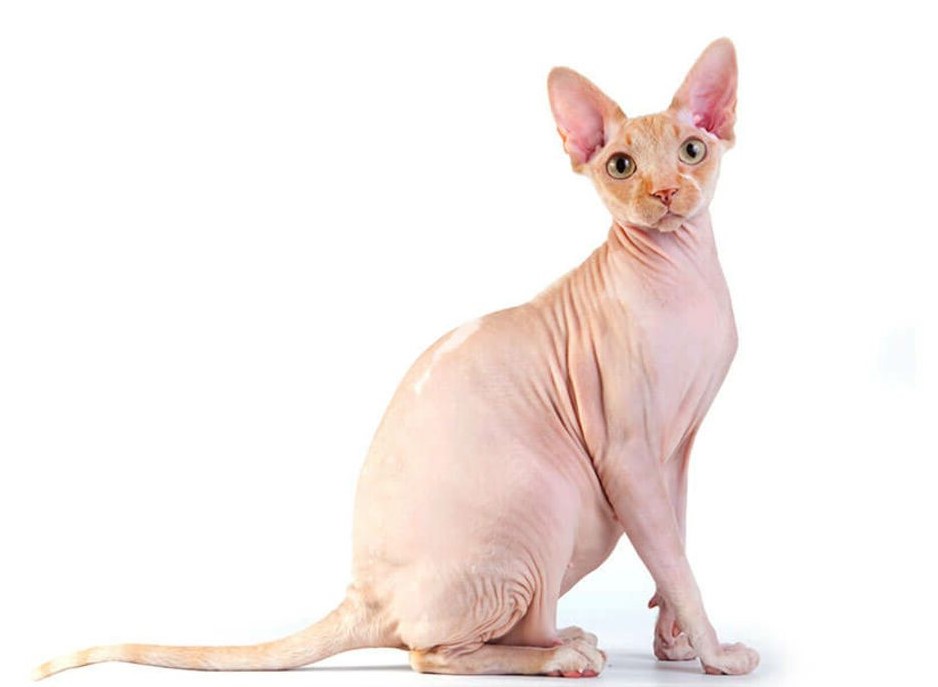
Sphinx – The most well-known hairless cat breed is the Sphynx, which originated in Canada in the 1960s. Resulting from a naturally occurring recessive genetic mutation, the Sphynx was developed through crossbreeding with shorthair cats to create a healthy, broad gene pool. Some Sphynx cats have a downy coat or patches of hair, primarily on the face, legs, and tail.
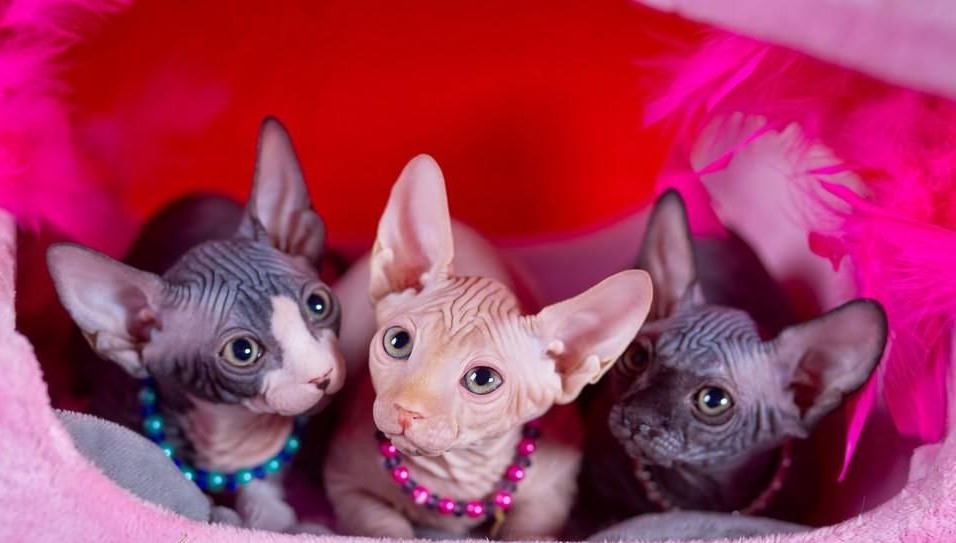
Bambino – The Bambino is a pint-sized hairless cat, as its name (which means baby or child in Italian) suggests. This dwarf feline is a cross between the Sphynx and the Munchkin. Some might have a little fur, primarily on the face, ears, legs, and tail. And others are totally hairless. These cats tend to be outgoing, affectionate, and somewhat playful.
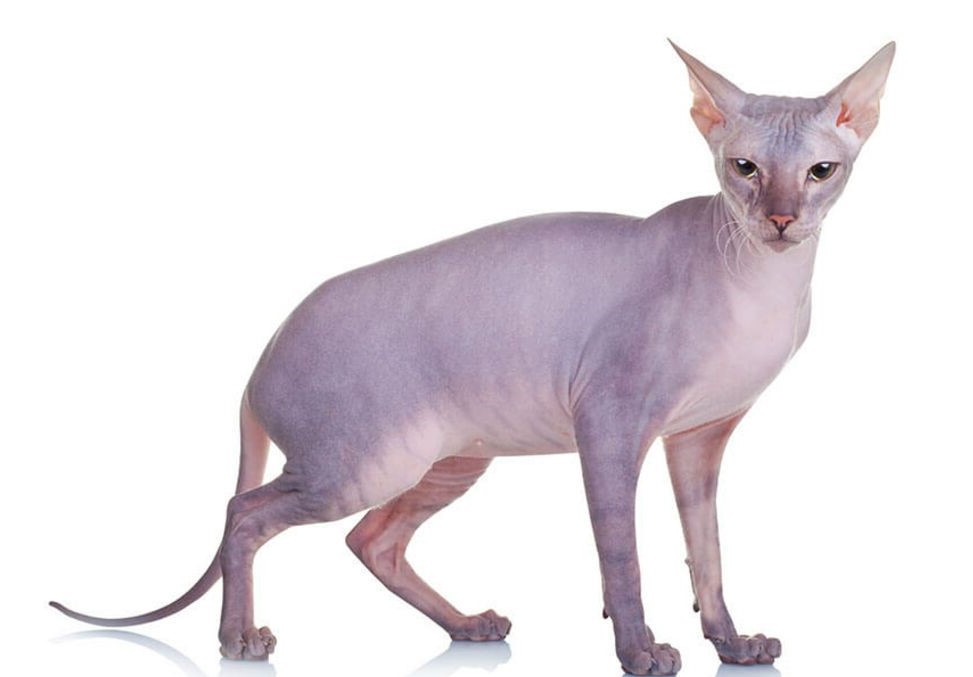
Donskoy Sphinx – this one is incredibly unique breed, also known as the Russian hairless, Don hairless, and Don Sphynx. Unlike the Sphynx, whose hairlessness comes from a recessive genetic mutation, the Donskoy is hairless thanks to a dominant gene. Remarkably, some Donskoy cats develop a partial winter coat when the weather cools, and they shed it once the season changes.
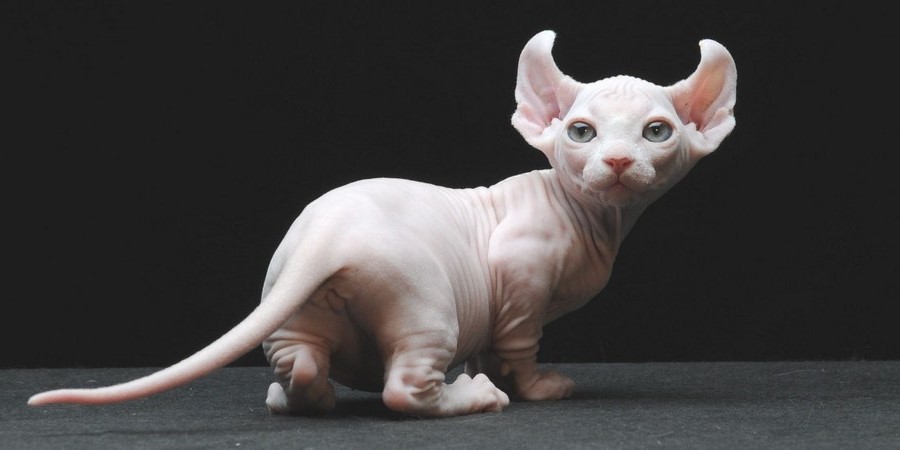
Dwelf – The Dwelf comes from crossing the Munchkin, American curl, and Sphynx cat all together, and breed into one. Several mutations must work, in order to achieve creation of this breeds. Its unique, hairless, compact, and elf-like appearance, unfortunately also can contribute to health issues, including skeletal problems. Nevertheless, these cats tend to be highly outgoing and engaged with their families, and they love to play.
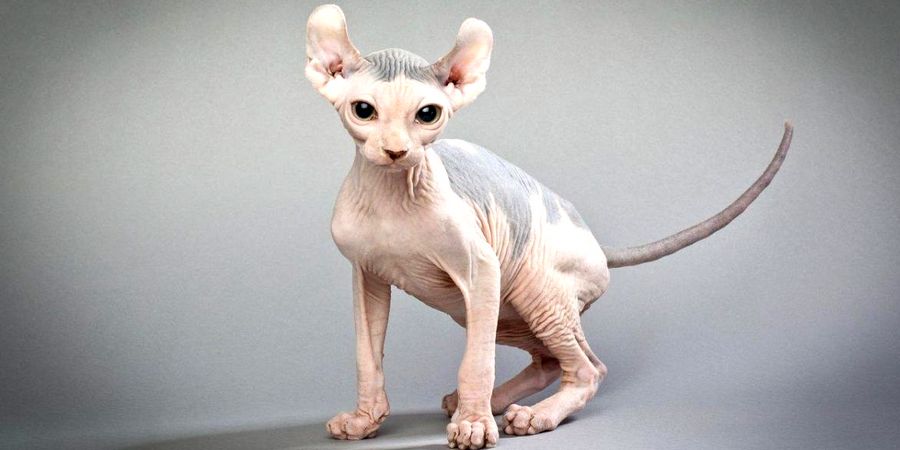
Elfi – As the creation of a cross between the Sphynx and American curl breeds, the friendly and playful Elf cat is the larger version of the Dwelf. These cats typically have a silky feel to their soft skin, like peach fuzz. Some have light patches of hair over the ears, nose, paws, or tail.
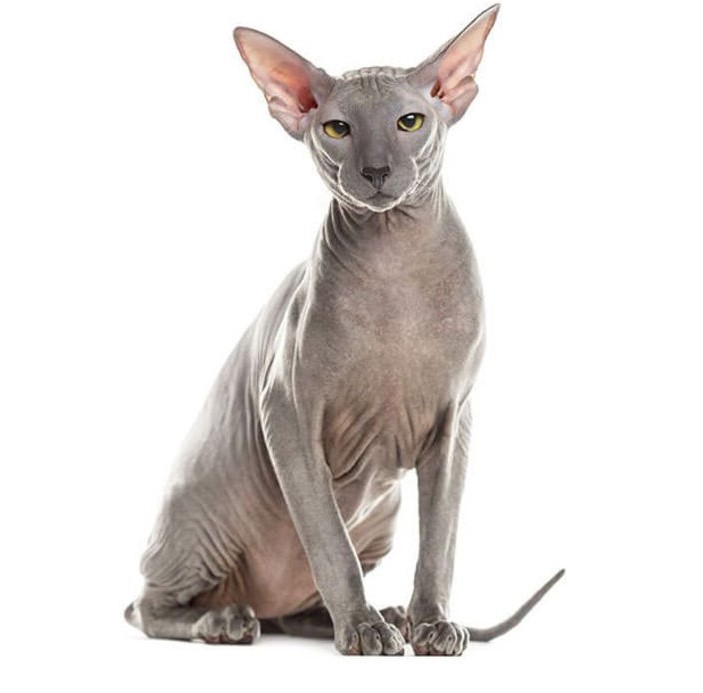
Peterbald – The Peterbald is an elegant cat with renowned features and long limbs. It originated from a cross between the Donskoy and Oriental shorthair. Not all Peterbald’s are born hairless. Some kittens have a fine, velvety coat that they either shed or retain for life. And occasionally, a Peterbald is born with a full coat like a typical cat.
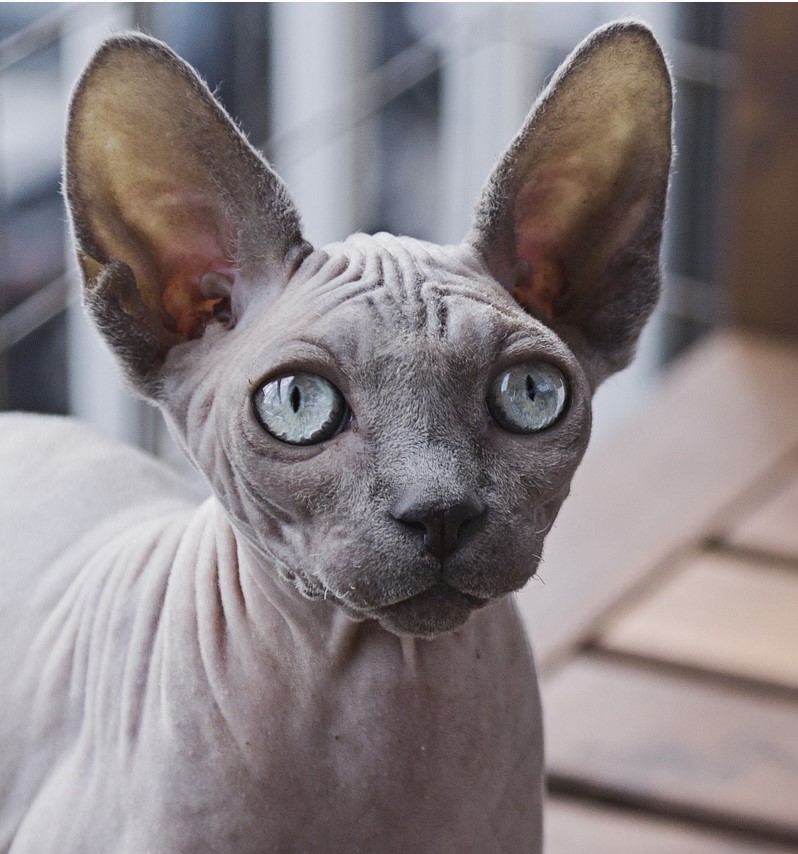
Minskin – Is a short-legged, hairless cat that evolved from a cross between a Munchkin and a Sphynx—with the Devon Rex and Burmese cat breeds. These cats often have scarce, fine fur on their bodies, especially at the “points” (the nose, ears, legs, and tail). But their bellies are almost always hairless.
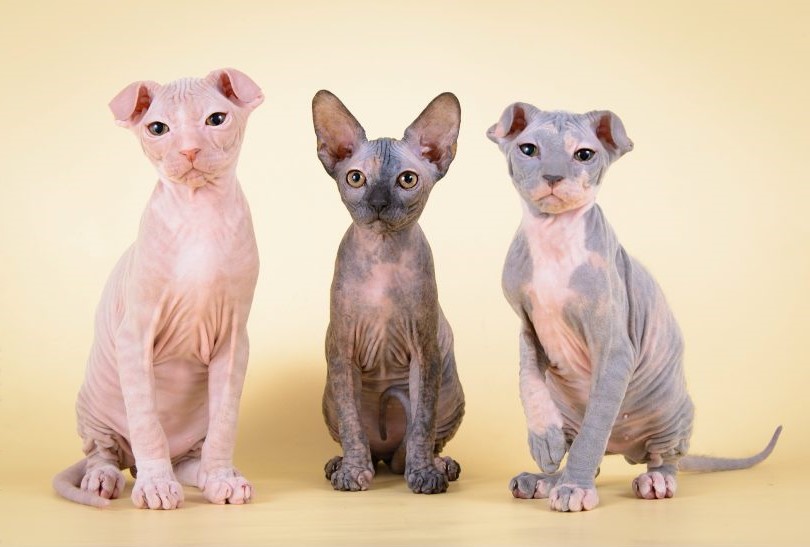
Ukrainian Levkoy – With its hairless body and inward-folding ears, this Easter European cat has an incredibly unique appearance. These cats were the result of a cross between the Donskoy and Scottish fold cat breeds. They tend to be quite friendly, smart, and playful, and many can even get along well with other pets.
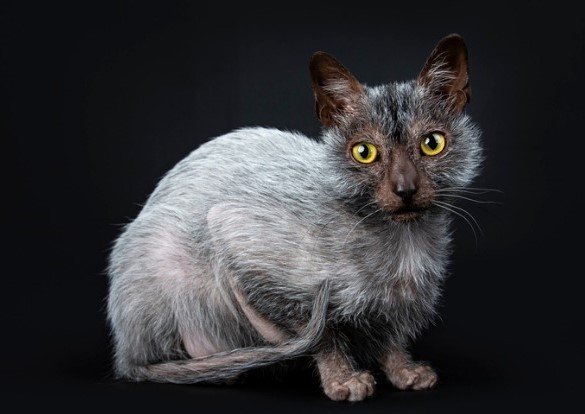
Lykoi – Also known as the werewolf cat, the Lykoi is not always entirely hairless. Instead, some cats are completely covered in the breed’s distinctive black-gray coat while others are predominantly hairless. Most of these cats lack hair around their
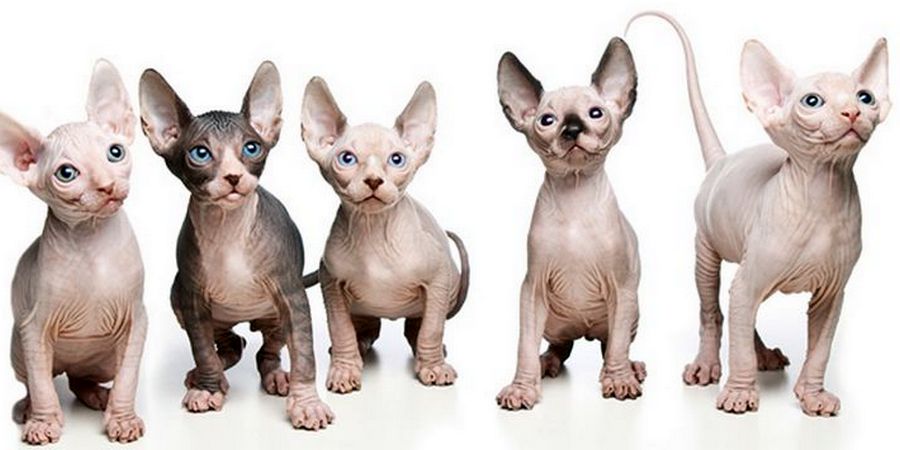



Thank You my friend we are very happy that you dedicated that post to us🥰🤗❤
My Pleasure 😉
LOVE LOVE LOVE 🤗